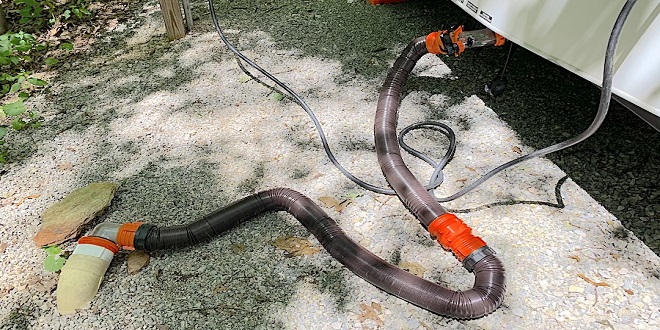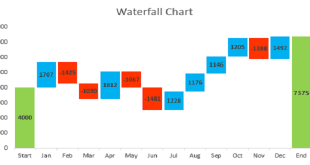Generally, an RV sewer hose should have at least 10 feet of length. However, you can get a hose that is slightly thinner or heavier. You can read about the thickness of a hose by reading its mils. One mil is not even one inch, so it’s best not to buy a hose with a big mil number. A hose with a long enough length doesn’t require an extension hose. An extension hose will add another 10 inches to the length of your sewer hose.
20-foot hose
If you’re in the market for a new sewer hose for your RV, you may want to consider getting a RhinoFLEX sewer hose kit. These kits come with a reusable locking ring and 10 feet of hose. These fittings are designed for ease of use, and you can transfer them to a different RhinoFLEX hose or any other sewer hose.
This high-quality RV sewer hose comes with a steel wire core and is made of 12 mil high-tensile strength vinyl. It compresses to only 31 inches for easy storage, and it connects your RV to a dump station for easy drainage. However, you should be aware of the chemicals found in this hose, as they can be harmful to health.
The Camco RhinoFLEX 20-foot RV sewer hose kit includes a steel wire hose and bayonet-style fittings. It features a three-layer construction with inside layers to prevent leaks. The steel wire is designed to resist crushing. The hose also has a four-in-one adapter for easy installation.
The sewer kit contains everything needed for emptying your RV holding tanks. The abrasion-resistant vinyl sewer hose includes a translucent elbow and wire guard for hand protection. The hose can be secured in storage with end caps. The hoses are easy to connect to the RV with rotating fittings on both ends.
The Rhino sewer hose comes with a 4-in-1 adapter, a 4-inch elbow, and two storage caps. It also comes with a four-inch square bumper and is compatible with three-inch, 3.5-inch, and four-inch sewer connections.
3-inch diameter
If you have an RV, you may want to consider getting a 3-inch diameter RV sewer hose. These hoses are ideal for RV travel because they are larger and less likely to get clogged. They are also ideal for inspecting your RV’s sewer system. A 3-inch diameter hose will help you monitor your system cleanliness.
Standard RV sewer hoses are made from a thin material that’s reinforced with small wires. These hoses aren’t strong enough to handle harsh winters, which can make it susceptible to breaking down. They also don’t perform well in long days of extreme heat and cold. Many RV owners don’t want the hassle of dealing with a faulty hose, so they hard-plumber their RV sewer line with PVC pipes.
RV sewer hoses are a great option for full hookup campgrounds and dump stations. Many of these hoses are 10-feet long and feature 90-degree adapters that allow for convenient access to sewage inlets. They also feature end caps to prevent leaks while in storage.
To properly connect the sewer hose, you’ll need to select the right connectors. The fittings are located at the two ends of the hose. Choose a hose with a sizing ring if necessary to ensure a proper fit. These sizing rings make it easier to install the sewer hose properly. You’ll also need a sewer hose sized for the length of your RV.
After you’ve installed the connections, you should empty the tanks. It’s best to dump the black water first, then the grey water. This helps the pipes and hoses rinse and keep them clean. Afterwards, fill the tanks with fresh water, which helps swish the wastes and prevent drying out.
Interchangeable
Interchangeable RV sewer hoses are made of flexible and durable plastic. They connect to the dump connection outlet in your holding tank and allow you to empty both the gray and black water tanks. The hoses are 20 feet long and feature cam lock fittings to prevent them from getting stuck while dumping.
Whether you plan to dump at a dump station or use a full hookup campsite, an interchangeable RV sewer hose is essential to protect your pipes and fittings. You should also use a donut-like fitting to seal the gap between the hose and dump connection. This will prevent leakage when the hose is stored.
Interchangeable RV sewer hoses are available in many sizes. They’re commonly three inches in diameter and have lugs on both ends. They’re designed to be universal, but adapters are a necessity in some situations. In addition to a sewer hose, you’ll need two water hoses. One is for city water, and the other for fresh water.
Ideally, an RV sewer hose is between 15 and 20 feet long. This length will allow the camper to be far enough away from sewage. You can also purchase extensions for the hose, which are generally between 10 and 20 feet long. Depending on the length of your campsite, you may need to use more than one sewer hose.
Storage
In order to prevent leaks and mold, it’s important to store your RV sewer hose securely. A bucket with a lid or a waterproof storage bag can work well. These containers are easy to find and inexpensive to purchase. They’re also waterproof and durable. These containers can be used to store your sewer hose, connections, and electrical cords.
A plastic toolbox can work well for storing your RV sewer hose. It can be attached to your trailer’s bumper or to your RV’s tongue. You can also place a small plastic container containing soap and gloves inside. Once the hose is stored, you’ll be able to remove it quickly when you need it.
Another good option for storing your RV sewer hose is a cargo tray. This container will allow you to easily access the hose without having to dig around in the cab of your RV. This option is great for RVs with limited storage space, as it will keep the sewer hose within easy reach.
Another option is to place your RV sewer hose in an old PVC pipe, and then secure it with a metal clamp or bracket. To keep the hose from bouncing and chafing, add a pipe insulation if necessary. Alternatively, you can purchase a PVC storage container from a big box home improvement store.
In an RV, you may find it easier to store your RV sewer hose in the bumper. However, this option is not ideal because the end caps on the sewer hoses are usually too large to fit into RV bumpers. Moreover, you might not be able to remove the sewer hose fittings from the bumper. And you may end up with a rattling mess. An alternative to storing your RV sewer hose in a bumper is to buy an aftermarket bumper cap that will fit securely onto the RV sewer hose.





